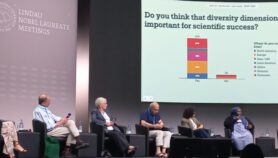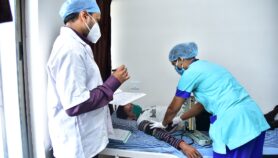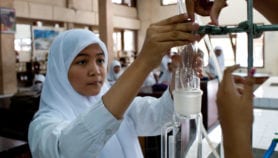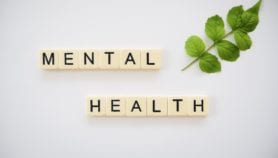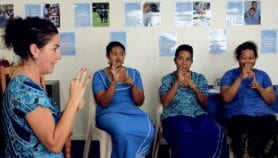By: Leena Menghaney
Send to a friend
The details you provide on this page will not be used to send unsolicited email, and will not be sold to a 3rd party. See privacy policy.
Both fake and substandard medicines threaten public health, and efforts to tackle them must put the focus on quality, says Leena Menghaney.
Numerous policy initiatives claim to promote patient safety by taking action against ‘counterfeit’ medicines. But most, if not all, of these initiatives are on the wrong track.
In reality, campaigns and legislation against counterfeit drugs often have nothing to do with concerns about drug quality.
Major US and European pharmaceutical companies have a vested interest in limiting competition from generic drugs, and are using increased enforcement of intellectual property laws as a tool to clamp down on the legitimate trade in high-quality generic medicines between developing countries.
Confusion around the term ‘counterfeit’ is feeding into this, diverting resources from the real problem of drug quality.
Trademark trouble
People use the term to describe fake or unsafe medicines. But under international law — the Agreement on Trade-Related Aspects of Intellectual Property Rights (TRIPS) — the definition of counterfeit is clearly targeted at one particular area: wilful infringement of trademark on a commercial scale.
Under TRIPS, ‘counterfeit’ is a trademark term covering a brand name or the shape or colour of a medicine. Yet not all fake medicines infringe a trademark — they may, for example, falsely claim to contain a pharmaceutical ingredient against malaria without copying an existing trademark.
There is another problem with the use of existing legal definitions to fight fake drugs.These definitions make no distinction between wilful trademark counterfeiting (a deliberate intention to deceive) and civil trademark infringement (when two brand names or packages are too similar from the rights-holder’s perspective).
Legitimately registered generic medicines could therefore be accused of being counterfeit solely because of a civil trademark dispute — on the basis of a similar-looking pill, for example.
Proliferating initiatives
Anti-counterfeit initiatives with this misplaced focus are growing fast. The Anti-Counterfeiting Trade Agreement (ACTA) was secretly negotiated by a handful of countries, and the Chirac Foundation and the Council of Europe are spearheading similar initiatives.
The dangers of this approach are clear. As a result of European customs regulations put in place in 2003 (EC Council Regulation no. 1383/2003), which cover infringements of intellectual property, almost 20 shipments of generic drugs, including basic antibiotics and anti-retrovirals, were detained while in transit from India to several developing countries via Europe in 2008 and 2009.
The European Union first claimed it was fighting trade in counterfeit medicines. But an official response by the Dutch government to a Freedom of Information Act request, filed by Health Action International, revealed that these shipments contained generic medicines detained on allegations of infringing intellectual property.
Under international law, goods cannot be detained in transit on the grounds of trademark or patent infringement — trademarks and patents are specific to a particular territory.
New legislation in some countries reflects this confusion. Kenya’s 2008 Anti-Counterfeit Act has a scope so broad that generic medicines patented anywhere in the world could be prevented from reaching the Kenyan market.
Public health groups seeking a judicial review of this legislation were recently joined by the UN Special Rapporteur on the Right to Health. But similar laws are being introduced in Uganda and other East African countries.
Even the WHO’s attempts to address the issue have been controversial. IMPACT, its anti-counterfeiting taskforce set up in 2006, lacks a mandate from WHO’s governing bodies. And the leading role of the pharmaceutical industry is raising concerns about conflicts of interest — for example, the working group on technology is chaired by the pharmaceutical industry trade group IFPMA (International Federation of Pharmaceutical Manufacturers and Associations).
Focus on quality
Anti-counterfeiting initiatives have also diverted attention and resources from where action is needed most.
The experience of Médecins Sans Frontières in over 70 countries suggests that substandard medicines — genuine drugs that fail to meet standards for quality, strength, purity or packaging — are a much bigger problem in the developing world. We see fake drugs less often than we see substandard ones.
But measures to address substandard drugs do not figure at all in ACTA, the EU or Kenyan legislations that claim to target unsafe medicines.
To improve the quality of medicines and protect patients, the WHO and governments must push drug companies to comply with the WHO’s good manufacturing practices, increase local capacity for technical evaluation, and actively identify and remove substandard and fake drugs from the supply chain.
At this stage, countries should think twice about adopting anti-counterfeiting legislation that could harm trade in legitimate generic medicines. Not including a definition of counterfeit medicine in health legislation will not stop them taking action against unsafe drugs.
India’s Drugs and Cosmetics Act of 1940, for example, contains several provisions that directly relate to drug mislabelling and adulteration, with penalties for importing, manufacturing or selling any spurious or adulterated drug likely to cause death or "grievous hurt".
To tackle both fake and substandard drugs, the regulatory function of the National Medicines Regulatory Agency in developing countries must be improved. And the WHO should boost funding for the Department of Essential Medicines and Pharmaceutical Policies.
The discussion on terminology and the confusion it creates has been taken up by the Intergovernmental Working Group on substandard/spurious/falsely labelled/falsified/counterfeit medical products, a body set up by WHO member states.
This fatal confusion must end. The term ‘counterfeit’ must be changed to reflect concerns about the quality of medicines. And the international community must give greater attention to substandard medicines — a pressing problem in developing countries.
Leena Menghaney is the India Manager for Médecins Sans Frontières’ Campaign for Access to Essential Medicines.
This article is part of a Spotlight on Detecting counterfeit drugs.
More on Capacity building

Script media release
Journalists offered ‘big break’ mentoring opportunity from Radio Nigeria
03/04/19







